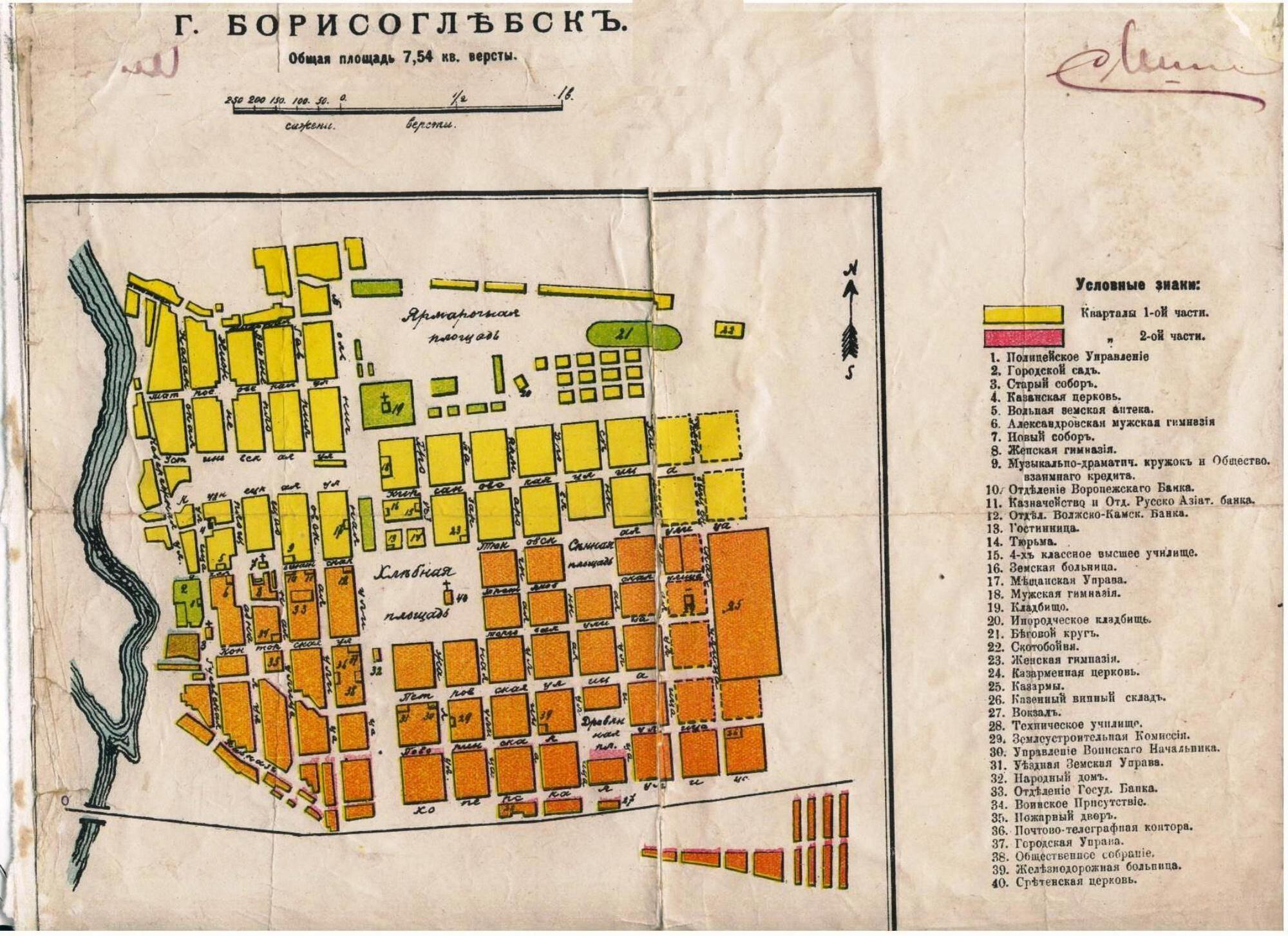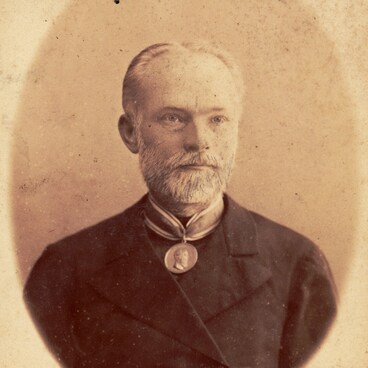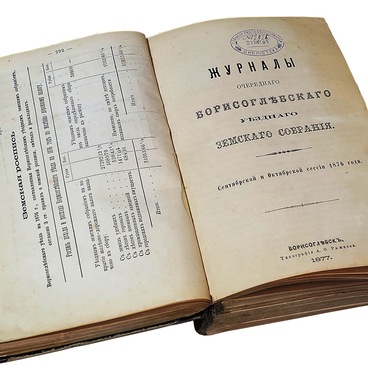Borisoglebsk is a city in Voronezh oblast, from 1976 till 1928 it was part of Tambov Governorate. The city was named in honour of St Boris and St Gleb.
The date of Borisoglebsk foundation is considered to be 1698, when the first fortified settlement was built. At first the city was called Pavlovsk, but soon it was renamed. The square in plan fortress was built as a watch point saving the place from invaders near influx of the Vorona river into the Hoper river.
The city view was formed in three stages. The first stage was from the 17th till the early 19th century, when the fortress, settlements and quarters were founded. Only the natural landscape influenced the planning. The second stage covers the first half of the 19th century, when the formation of more structured planning took place. It started to look like a full-fledged urban planning. The third stage dates from the second half of the 19th century till the early 20th century, when the preserved architectural look of the city was formed. The economic growth of Borisoglebsk led to the growth of its population and, therefore, the city grew territorially.
The featured city plan as of 1914 shows its separation into two parts with the western one formed in the second half of the 19th century. Later on the square in plan eastern part was formed, limited with the railroad in the south. The surrounding area was gradually developing forming the industrial area, which included studios, steam-powered mills and a state-owned winery. Along with that the construction of a hospital, a church, a college, residential and industrial pavilions took place. The northern, western, and eastern parts were limited with the territory of the factory, Bolshaya street (now Svoboda), and Cemetery street (now Chkalova).
At the same time the buildings belonging to the 6th reserve cavalry regiment were situated in the east. Comparing to the Old City, the quartiers of Eastern Borisoglebsk are smaller, but the spaces are bigger.
Different parts of urban area are coloured on the map. Administrative buildings, banks, selling spots and educational institutes are indicated. The existence of multiple objects such as shops, banks, a library, a post office, colleges and secondary schools is typical for the old part of Borisoglebsk. The urban area mostly consisted of so-called ‘new’ district. The city hospital, the district court and some smaller industrial buildings were situated there as well.



